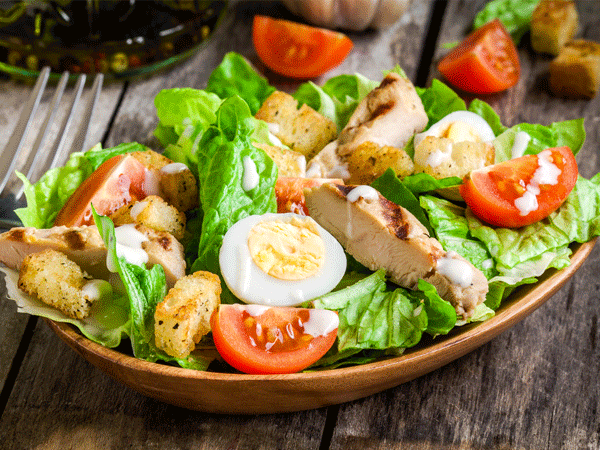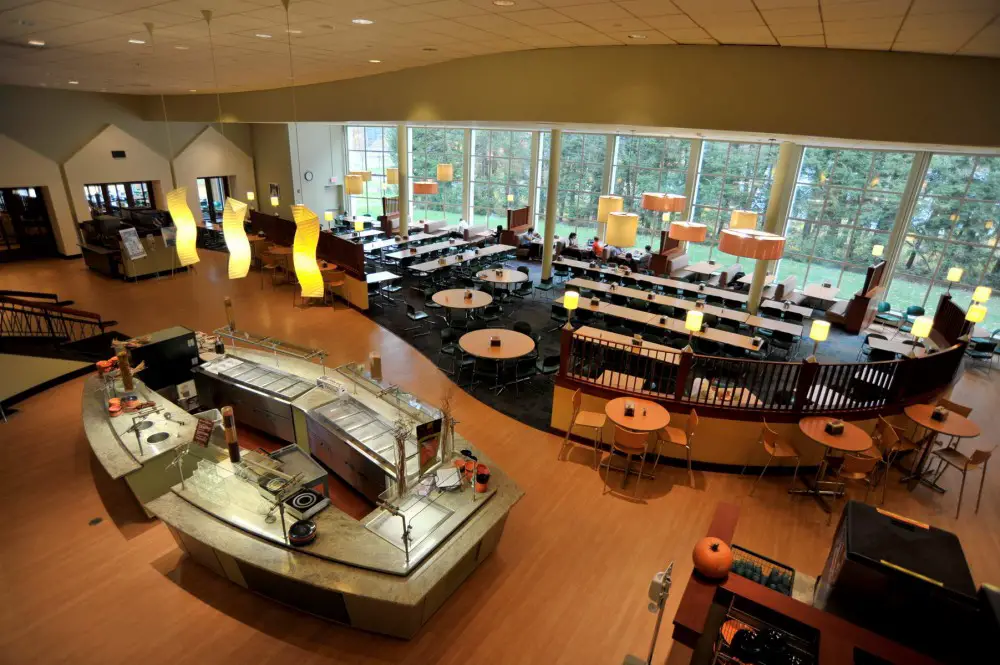College Dining 101
For instance, salad ceases to be a salad when bacon, ranch and cheese are added.
By Phillip Bugajski, Loyola University Chicago
Healthy eating on campus is always a struggle between school, homework, extracurriculars and ease of access.
Everyone knows that eating doughnuts and pizza every day isn’t healthy, or nearly as fun as it sounds. But, some of the foods that you may not immediately suspect, or foods that you think might be innocuous, may actually make eating healthy and staying in shape harder to do.
For example, take the common glass of orange juice. For years, TV commercials, as well as physicians, drilled it into people that starting your day “right” with fruit juice was essential to being healthy. After all, the vitamins and minerals from fruit juice are basically the same as eating the fruit, right?
Unfortunately, for all you juice fanatics, mass production has essentially turned fruit juices into glorified soda. The amount of added sugar in each glass is staggering. When you eat the actual fruit, though, the natural fiber slows the digestion of the fruit’s sugars. When companies remove the fibrous tissue, you get the sugar, but none of the mitigating elements.
Diluting sugary juices with water can help cut some of the calories out of the juice and make it a healthier option. Still, the best choice for a morning beverage is plain water. You get dehydrated while you sleep, so drinking water when you wake up not only replenishes your body, but can also make you feel more awake. For all the coffee addicts out there, this is some good news.
Next up, what seems healthier in the dining halls than salad? It’s literally a bunch of lettuce with added vegetables. If your dining hall is anything like the norm, then salad by itself is a perfectly healthy option, but all the calories are in the add-ons.

If you’re trying to cut calories, things like salad dressing, (again, with the added sugar) hard-boiled eggs and croutons can quickly add up. These add-ons are not unhealthy in their own right, but when looking for low-calorie options, salad bars can easily become caloric death traps.
Is it even necessary to mention that you shouldn’t put bacon on a salad if you’re trying to eat healthier?
You don’t need to forgo everything that tastes good in a salad. Adding flavor with other vegetables keeps the caloric count low, while also providing essential vitamins. With all the other options, keep in mind that, sometimes, less is more.
When you’re late for class, you don’t have time to sit down for a full meal. It’s okay; life gets out of control sometimes, or almost always. Taking something on the go, like toast or fruit, is a better idea than a heavy muffin, or even a bagel.
Be sure to check for whole or multigrain-bread options. The less processed the bread is, the more natural whole grains remain. In addition to having fewer calories, whole-grain options contain more fiber and fewer processed sugars.
In addition to bread products, be on the guard against starchy foods. There’s a reason why people call fries and chips “comfort foods.” Potatoes, rolls and white rice are some of my favorite foods, but they contain a lot of starch, which is all too easily accumulated on the waistline and can make you feel weighed down and tired.
The whole-grain rule is the same for pasta, or any bread product. While you’re at it, make sure that the pasta in the dining hall isn’t cooked in butter. Although it may taste good, the last thing you need is more fat in your diet. American diets, on average, already have more than enough fat in them.
At this point, it would be good to mention that none of this is intended to be medical advice. I’m just an undergraduate student who took Biology 101. Everything is your choice, and a lot of schools have the nutritional information for each item listed in their dining halls.
You know what your body needs, and how to feed it. This article is just meant to provide some guidelines for watching what you eat.
If the last few paragraphs filled you with an impending sense of doom, or at least made you lose your appetite, I apologize. The question then, is how can you eat healthy on campus, when it seems like everything has hidden calories and requires hours at the gym to work off?
I’ve had a lot of success with an on/off vegetarian or vegan diet. Usually, I love eating meat, but I’ve found that since most of my diet has become plant-based, I have lost weight, become more alert and have felt better in general. I live by my Costco-bought, four-pound bag of broccoli.
Meat, red meat especially, while being an American classic, packs one of the heaviest punches with calories and fats. I’m not trying to be high and mighty on vegetarianism, nor am I claiming that one diet is inherently better than another. People who have diets where meat is the primary component, though, typically tend to be overweight and at a higher risk for heart disease.
Even if you don’t want to go full vegetarian, reducing your intake of red meat, like beef, can reduce your risk of heart disease, help you lose weight and lessen your carbon footprint.
In addition to reducing the amount of food you consume and increasing your activity level (if you want to lose weight), simplifying the foods that you eat can help. Don’t load up with salty foods. Plain vegetables, beans and whole grains can easily become food staples, while providing adequate nutrition and not weighing you down, like a McDonald’s burger or a Taco Bell burrito.
Ultimately, though, the key component of healthy eating, regardless of whether you’re on campus, is moderation. It’s fine to eat what you want one day, but be stricter with yourself the next.
In fact, changing up what you eat can stop you from getting bored with your food choices. With the stress of finals on the horizon, giving into cravings once in a while, or taking a break and snacking, is not the end of the world. Variety is the spice of life, and college is all about trying new things, food included.

















[…] model was unique within the restaurant industry. They were renowned for their incredibly long salad bars that greeted customers when they first stepped […]